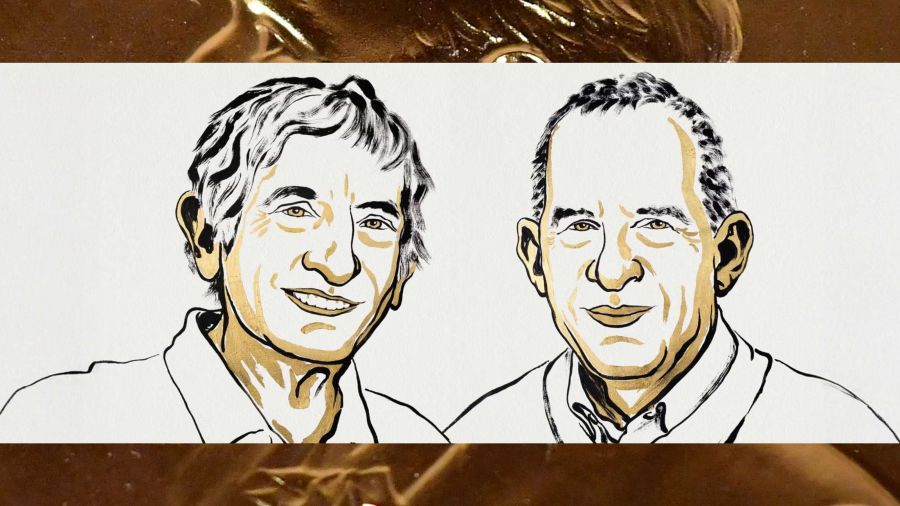Three physicists, including a pair of U.C. Santa Barbara professors, received the 2025 Nobel Prize in Physics for essentially bridging the gap between the invisible quantum world and the world we can see and touch.
UCSB professors John M. Martinis and Michel H. Devoret, along with John Clarke of U.C. Berkeley, were honored for experiments that revealed quantum behavior in a system big enough to hold in your hand. The trio will share an award of 11 million Swedish kronor (roughly $1 million USD).
The experiment
The Royal Swedish Academy of Sciences, which selected the laureates, said the group’s groundbreaking work was conducted in 1984 and 1985.
“A major question in physics is the maximum size of a system that can demonstrate quantum mechanical effects,” the official Nobel Prize media release stated. “This year’s Nobel Prize laureates conducted experiments with an electrical circuit in which they demonstrated both quantum mechanical tunnelling and quantised energy levels in a system big enough to be held in the hand.”
Their circuit behaved as if billions of electrons were moving together like a single quantum particle — something scientists once believed could only happen inside atoms or subatomic particles. Acting as one, the system was able to tunnel through an energy barrier, like a tennis ball going through a wall instead of bouncing off of it, and absorb or release energy in fixed amounts.
In other words, although the circuit was relatively small, their work showed that quantum effects can exist in larger, man-made systems visible to the human eye.
Not a physicist? Don’t worry, here’s the breakdown:
If that sounds abstract, here’s the experiment in simpler terms:
Martinis, Devoret and Clarke built a hand-held electrical circuit out of special metals that let electricity flow without resistance.
- Trapping the current: They designed the circuit so the electric current stayed “stuck” in a stable state with zero voltage, like a tennis ball sitting in a valley.
- Creating a barrier: The circuit’s structure formed a small “hill” of energy that the current shouldn’t be able to climb over.
- Watching it escape anyway: Even without enough energy, the current suddenly appeared on the other side — as if it had passed through the hill. That’s quantum tunneling, where a quantum system slips through barriers it couldn’t normally cross.
Afterward, the team tested the circuit in different ways to confirm the effect was real — not a fluke or equipment error — proving they were seeing genuine quantum behavior in a device large enough to hold in your hand.
Why it matters
Martinis, Devoret and Clarke proved that quantum mechanics doesn’t just govern the microscopic world — it can also be engineered into devices we can see and hold.
Their discovery laid the foundation for quantum computers, sensors and communication systems now being developed around the world, ushering in a new era of quantum technology that could transform computing and measurement at every scale.










